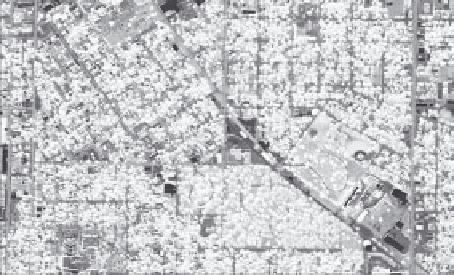Environmental Engineering Reference
In-Depth Information
TABLE 14.1
Site Characteristics of C
ase Study 1
Characteristic
Site Information
Location
Michigan
Years of operation
More than 100 years
Size of property
5 ac
Geologic setting
Glacial and lacustrine sediments
Soil type and
stratigraphy
Interbedded medium to fine sand from the surface to a depth of
approximately 27 m (90 ft) where a clay deposit is encountered
Contaminants detected
DNAPL and LNAPL VOCs, PAHs, Pb, Mn, PCBs
COC in groundwater
DNAPL VOCs, Mn, and PAHs
Depth to groundwater
4.6 m (15 ft)
Highest CRF
GW
ranking
1274 DNAPL VOCs
Highest CRF
SOIL
ranking
1457 PCBs
Geovulnerability
ranking
78
facility in the late 1800s and evolved into a foundry manufacturing parts for the automo-
bile industry in the early 1900s.
The history of chemical use was significant throughout the operational history at the
facility, specifically
• LNAPL and DNAPL VOCs for cleaning, painting, staining, and varnishing
• PAHs in paint, lubricating, and machining
• Heavy metals from paints
• PCBs in electrical equipment and capacitors
• Heavy metals from foundry operations
Table 14.1 lists some basic information concerning the site including its size, years of opera-
tion, COC, dominant subsurface geology, depth to groundwater, and whether groundwa-
ter is present in an aquifer. Figure 14.1 shows the urban setting of the site.
.
N
Case
Study 1
FIGURE 14.1
Aerial image of Michigan site showing urban setting.






Search WWH ::

Custom Search